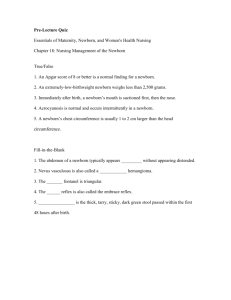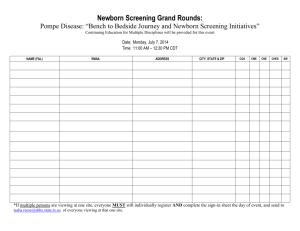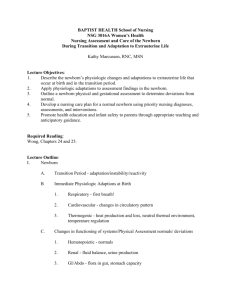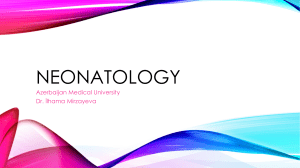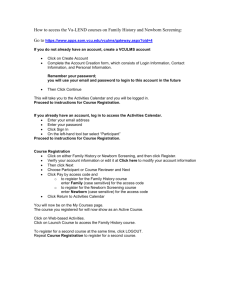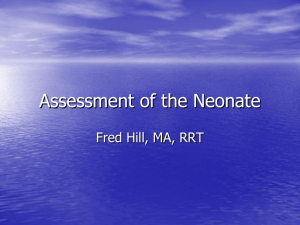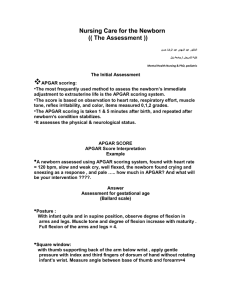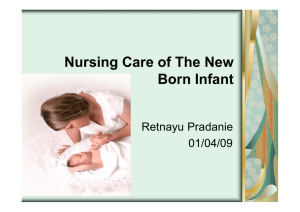Chapter 54 Newborn Care Key Terms
advertisement
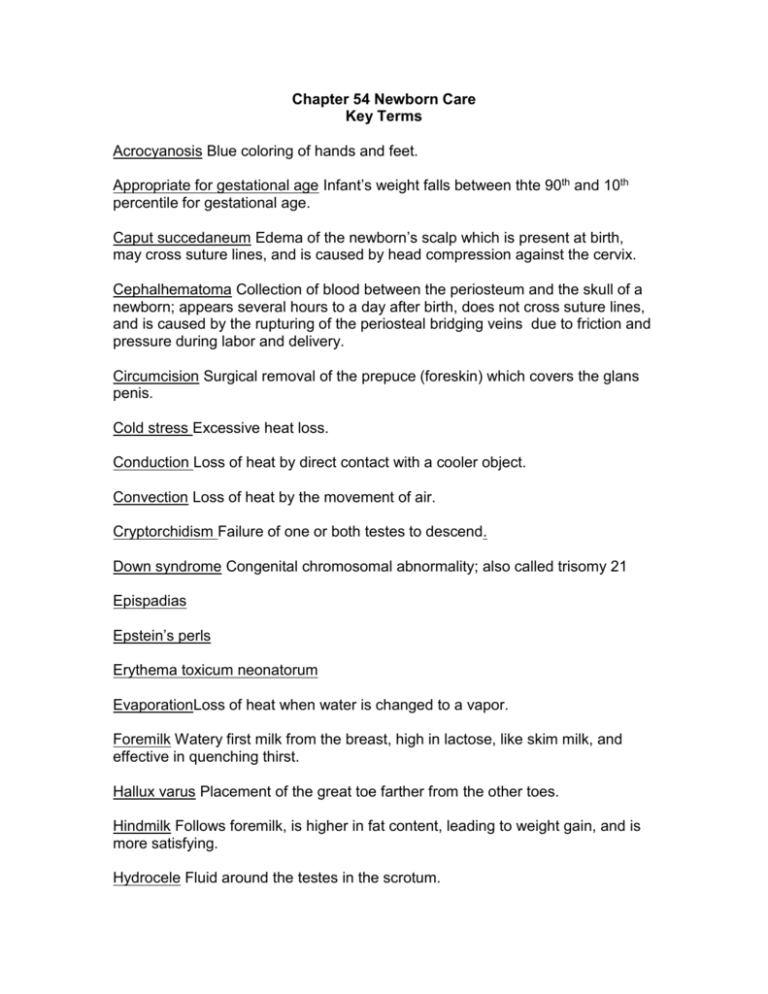
Chapter 54 Newborn Care Key Terms Acrocyanosis Blue coloring of hands and feet. Appropriate for gestational age Infant’s weight falls between thte 90th and 10th percentile for gestational age. Caput succedaneum Edema of the newborn’s scalp which is present at birth, may cross suture lines, and is caused by head compression against the cervix. Cephalhematoma Collection of blood between the periosteum and the skull of a newborn; appears several hours to a day after birth, does not cross suture lines, and is caused by the rupturing of the periosteal bridging veins due to friction and pressure during labor and delivery. Circumcision Surgical removal of the prepuce (foreskin) which covers the glans penis. Cold stress Excessive heat loss. Conduction Loss of heat by direct contact with a cooler object. Convection Loss of heat by the movement of air. Cryptorchidism Failure of one or both testes to descend. Down syndrome Congenital chromosomal abnormality; also called trisomy 21 Epispadias Epstein’s perls Erythema toxicum neonatorum EvaporationLoss of heat when water is changed to a vapor. Foremilk Watery first milk from the breast, high in lactose, like skim milk, and effective in quenching thirst. Hallux varus Placement of the great toe farther from the other toes. Hindmilk Follows foremilk, is higher in fat content, leading to weight gain, and is more satisfying. Hydrocele Fluid around the testes in the scrotum. Hyperbilirubinemia Excess of bilirubin in the blood. Hypospadias Placement of the urinary meatus on the underside of the penis. Kernicterus Severe neurologic damage resulting from a high level of bilirubin (jaundice). Lanugo Fine hair covering the fetus’s body. Large for gestational age Infant’s weight falls above the 90th percentile for gestational age. Meconium Fecal material stored in the fetal intestines. Meningocele Saclike protrusion along the vertebral column filled with cerebrospinal fluid and mininges. Milia Pearly white cysts on the face. Molding Shaping of the fetal head to adapt to the mother’s pelvis during labor. Mongoklian spots Large patches of bluish skin on the buttocks of dark-skinned infants. Myelomeningocele Saclike protrusion along the vertebral column that is filled with spinal fluid, meninges, nerve roots, and spinal cord. Neonatal transition First few hours after birth wherein the newborn makes changes to and stabilizes respiratory and circulatory functions. Neutral thermal environment Environment in which the newborn can maintain internal body temperature with minimal oxygen consumption and metabolism. Nevus flammeus Large, reddish-purple birthmark usually found on the face or neck which does not blanch with pressure. Nevus vascualris Birthmark of enlarged superficial blood vessels, elevated and red in color. Nonshivering thermogenesis Metabolism of brown fat; process unique to the newborn. Ophthalmia Neonatorum Inflammation of a newborn’s eyes which results from passing through the birth canal when a gonorrheal or chlamydial infection is present. Phimosis Condition wherein the opening in the foreskin is so small that is cannot be pulled back over the glans.




